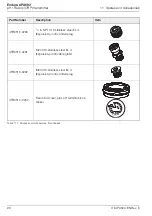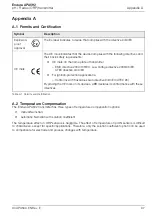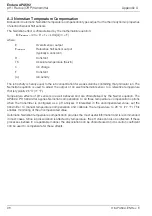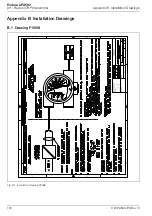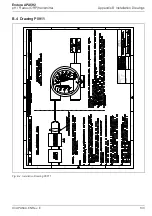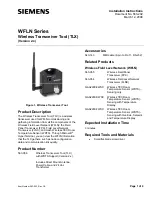
Endura APA592
pH / Redox (ORP) transmitter
Appendix A
OI/APA592–EN Rev. E
99
A.3.1 Solution Coefficient
The solution coefficient compensates the Nernstian value for pH measurements, and the raw voltage value
for ORP or pION measurements, by a fixed value per each 10 °C (50 °F).
The temperature compensation factor is derived from the following equations:
pH
indication
= pH
Nernstian
±COEF × ((T –25 °C)/(10 °C [50 °F]))
mV
indication
= mV ±COEF × ((T – 25 °C) / (10 °C [50 °F]))
where:
COEF
pH or mV change per 10 °C (50 °F).
pH
Nernstian
Nernstian pH value referenced at 25 °C (77 °F) after applying the factory
and process calibration values.
pH
indication
pH value indicated on the transmitter and proportional to the current
output value.
mV
millivolt value of the sensor output after applying the factory
and process calibration values.
mV
indication
mV value indicated on the transmitter and proportional to the
current output value.
T
temperature of the solution in °C after applying
the factory and process calibration values.
Examples of solution coefficients for pure water applications are:
pure water = +0.18 pH /(10°C [50 °F])
pure water with 1 ppm ammonia = +0.31 pH /(10°C [50 °F])
The solution coefficient for the APA592–PH transmitter either adds or subtracts a configured amount of the
process variable per 10 °C (50 °F) to the Nernstian compensated process variable. Thus, an application
with a process liquid that decreases in its pH value as the temperature increases uses a positive solution
coefficient correction factor. Conversely, an application with a process liquid that increases in its pH value
as the temperature increases uses a negative solution coefficient correction factor.
The solution coefficient affects the uncompensated process variable for ORP and pION analyzer types in
the same manner as the pH analyzer type.












